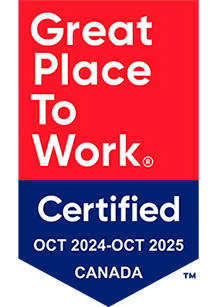Did you know that exotherm (the heat generated during reaction) is proportional to the gel time and the mass of the casting?
- The faster the gel time the higher the exotherm.
- Thick sections have higher exotherm.
- The higher the mass, the higher the exotherm.
Did you know that it is the responsibility of the user to confirm that all the products they purchase is on the TSCA Inventory (USA) or on the DSL (Canada)?
Assuming that the supplier has the products listed is not an adequate defense with the EPA.
Did you know that Epoxies and Polyurethanes are mix ratio sensitive?
Unlike Polyester materials, adding more or less hardener will not speed up or slow the reaction but will cause degradation in the cured properties.
Did you know that not all epoxies are hard after cure?
Epoxies can be formulated to yield a variety of hardness, down to the Shore A range with elongation up to 100%. However, if a product turns out to be softer than indicated on the technical data sheet, there is a good chance that it was not mixed in accordance with the stated mix ratio.
Did you know that HDT (heat deflection temperature) and Operating Temperature are not the same thing?
The HDT is the temperature where the material begins to lose its mechanical strength however, this is only significant in applications where mechanical strength is required at that temperature. In other cases, such as potting, where mechanical strength may not be necessary at elevated temperatures a material with a lower HDT may be sufficient.
Did you know that only 50-60% of the epoxy groups have reacted at the point of gellation?
At this point the linear molecules have become large enough to become solid at room temperature, but the product does not have significant mechanical properties. Depending on the product, the gelled material may have developed enough properties to be handled in production but not enough for its intended end use. In addition, a material in its gelled state is vulnerable to stresses caused by thermal cycling. Inadvertent thermal cycling can occur during processing if the part is allowed to cool prior to post cure.
Did you know that embedded sharp corners are one of the major causes of cracking?
Embedded sharp corners represent areas of concentrated stress. Small cracks are initiated during gellation as the material shrinks. Subsequently, these micro cracks will propagate during thermal cycling.
Did you know that temperature has a major impact on processing?
The viscosity of epoxy resins decrease rapidly with temperature. Lower viscosity will aid in de-airing products while resulting in shorter pot life and faster gellation. As a rule the curing reaction will double (the pot life is halved) for every 100C rise in temperature.
Did you know that soft spots in a cured product are most often the result of improper mixing?
Thorough and complete mixing of two component materials is extremely important to avoid either resin rich or hardener rich areas in the mix. Under catalyzed or over catalyzed areas contain excess, un-reacted material resulting in soft spots. If the components are mixed by hand or drill it is important that the material from the sides and bottom of the container is properly mixed in. If the materials are mixed with automated equipment, it is important to have the correct mix head (the correct number of elements) and the mix ratio is checked frequently.
Did you know that shrinkage occurs in two ways?
The first shrinkage that occurs is during cross-linking as the molecules attach to each other and take up less space. More significantly, the greater shrinkage occurs due to thermal contraction while cooling down from the exothermic reaction. As a rule, slower reacting or products containing large amounts of fillers shrink less.
Did you know that epoxies and polyurethanes are brittle immediately after gellation?
Almost all epoxy and polyurethane compounds pass through a stage, just before the molecules completely align themselves, during which the product is extremely brittle. Depending on the type of material, this stage is passed either with time or the application of additional heat such as post cure. A component or module will be prone to cracking if subjected to undue stress, thermal cycling or thermal shock immediately after the gellation phase.
Did you know that, in order to compare the dielectric strength of two different materials, you must also consider the thickness of the test specimens used to determine the published values?
It often happens, during material selection, that a product is ruled out because the published dielectric strength is lower. In fact, the published figure is just about meaningless unless the thickness of the test specimen is also stated. A thin test specimen will always yield higher figures because there are less impurities contained within the structure. In order to compare "apples to apples" the two specimens have to be tested in the same thicknesses under the same conditions.
Did you know that some materials are more suited to automated dispense equipment than others?
Without question, unfilled product are most suited to automated equipment. However in most cases they are not suitable for the part under consideration due to their inherently higher shrinkage and lower thermal conductivity. Materials containing fillers can be formulated for reduced wear on automated equipment by employing "non-abrasive" fillers. Crystalline fillers will cause the most severe wear in dispense cylinders while "Amorphous" fillers are the least damaging. It is important for the supplier to know how the material will be dispensed in order to provide the most appropriate material for the process at hand.



